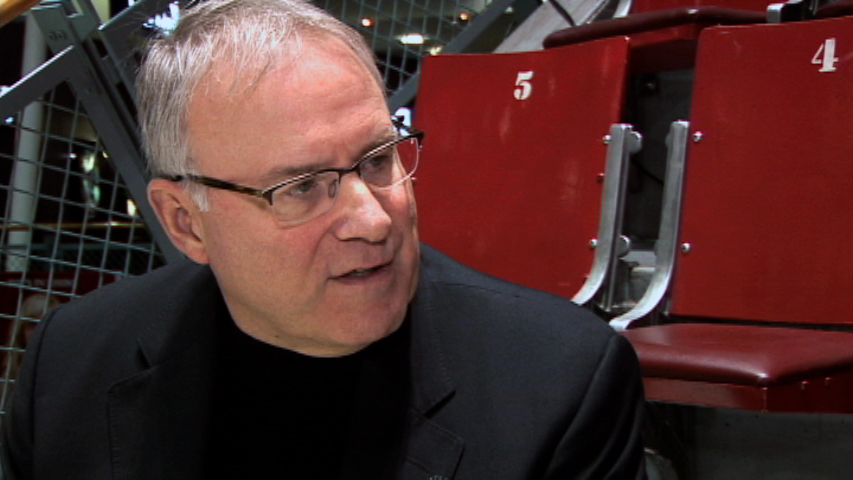Part 1: The Mission
1.5 Barriers and Opportunities for Communication
Learning Objectives
- To be able to identify and describe potential barriers to science and risk communication.
- To develop strategies to overcome barriers to science and risk communication.
Once you have defined your mission, you will need to identify potential barriers that could prevent you from accomplishing it. A barrier in science and risk communication is anything that could prevent you from delivering your message or prevent your audience from receiving, understanding, or acting on it. There are many different frameworks used to classify communication barriers. For this textbook, we have identified four types of barriers: 1) barriers associated with the organization in charge of communication, 2) barriers associated with the communicator, 3) barriers associated with the audience, and 4) barriers associated with the situation in which the communication is taking place.
It is important to identify communication barriers so that you can employ effective techniques to overcome those barriers, or, if no such techniques exist, potentially adjust your mission in order to maximize the efficiency and efficacy of your communication program.
Organizational barriers
Inadequate resources
Good communication takes a lot of time, effort, and financial or in-kind support. If you encounter resource limitations, then you could start off by looking at applicable internal or external standards, agreements, etc. that mandate communication. Perhaps you have an obligation to a regulatory agency or a stakeholder? If not, then you could make your case for the value of good communication, particularly if you can show how communication will help you to achieve your organization’s vision or mission or if you can provide concrete examples of the benefits of good communications programs. If all else fails, get creative. Can you find partners to help deliver your message? Make use of free platforms?
Lack of engagement or interest in communication
It is very hard to mount a good communication program if you are not backed by your leaders and your team. The key here is finding the root cause. If it is simply apathy, then it may not be hard to educate people, or at least get the social license to develop your program. However, if the lack of engagement is a result of hostility toward communication, then it may be trickier to overcome. The cause of hostility is usually fear — fear from past bad experience, fear of losing control, fear of looking bad, etc. Once you figure out the cause of the fear, then you need to put into place a plan or process to alleviate it. Maybe this means compromising on your plan so that everyone is comfortable? Running a small pilot that is less risky? Committing to regular check-ins?
Bureaucratic barriers
For many large organizations there are policies and procedures that govern communication. For example, you may have to get your communications approved by a specific communication or legal team before proceeding. This can be helpful, but it can also be cumbersome and occasionally do damage to your message or timeline. To deal with this issue you need to be very familiar with the review and approval process in your organization and who is involved. Sometimes developing personal relationships with your communications team can help, other times you may have to lobby for changes in the policies or processes.
You can’t give the audience what they want
You can nip this one in the bud by being clear about your organization’s role and mandate right up front. For example, if your organization is responsible for educating people about a risk but ultimately has no power to alleviate that risk, then you need to make sure that your audience is clear on that at the beginning and throughout the communication process. Complete transparency is particularly important for communication involving stakeholder engagement or you risk tokenism (i.e., the practice of making only a perfunctory or symbolic effort to involve a specific group in a decision-making process).
Example

All five of Canada’s major Inuit organizations pulled out of the federal government’s Indigenous Working Group on food security in 2018, saying the government was not listening to them in its review of the Nutrition North program. Shylah Elliott, health policy analyst for Nunavut Tunngavik Incorporated said “That it was just tokenism and optics to have this Indigenous working group so they can justify the changes that they want to make, or just show that they are being responsive in some way.” This situation might have been avoided if the Working Group had developed and/or adhered to detailed terms of reference regarding the roles, responsibilities, mandates, objectives, and limitations of all parties involved. It is particularly important that the process for decision-making be clearly outlined.
Personal barriers
Inability to clearly outline a pathway for action
‘Where there’s a way, there’s a will.’ – Ken Dryden
If you can’t identify a clear, concrete, and feasible pathway to achieve the change that you are advocating for, chances are that no one else will. This means that communication plans that are intended to create action but that are focused mainly on raising audience interest or awareness are usually unsuccessful. Conversely, if you can identify and communicate the specific steps needed to achieve your goal, then it will be easier to motivate your audience to take those steps.

Blaming the audience for communication breakdowns
A 2013 study of scientists in the UK and US found that scientists generally believe the public is uninformed about science and therefore prone to errors in scientific judgement. Given this attitude, it no wonder that breakdowns in science and risk communication are often blamed on audience ‘stupidity.’ More often than not, however, if someone does not ‘get’ your message, it is either because it is not being communicated well or because there are other factors at play that prevent the audience from heeding your advice. For example, your audience may not disagree with you on the facts, but perhaps they have a have a different value system or perspective through which those facts are interpreted. To be a successful communicator, you must be willing to anticipate, respond to, and learn from your communication failures.
Unwillingness to partner with the public, activists, opponents, etc
Even if you are a scientific expert, you need to understand (and we mean really understand) that your audience is an ‘expert’ in how your science affects them. This does not mean that you have to do what they say, but it does mean that you have to actively engage with all points of view, and particularly those that differ from your own. This sort of engagement involves actively seeking out the strongest possible opposition to your own message, and acknowledging that opposition in your communications.

Biting off more than you can chew
‘Better is good’ – Barack Obama
If you see a problem it seems natural to think that your goal should be to fix that problem. The reality, however, is that many problems are too large, complex, and ingrained to be addressed by a single communication campaign. It is usually more effective to break the problem down into smaller, more manageable pieces or into sequential steps in a pathway. Not only are discrete and focused issues easier to communicate about, but your ability to demonstrate a track record of success will give you the social or political license, as well as the resources and supports, that you need to tackle bigger problems.
Audience barriers
Identity
People have a hard time listening to messages that might clash with their own sense of identity or that of their social network. I am sure that most of us have been involved in a conversation where someone has disparaged a policy or program simply because it came from a political party that they do not identify with (carbon tax anyone?). There is no easy solution to this, but a first step is really getting to know your audience — culture, religion, politics, etc. Then you can start to think about whether your task is even feasible or whether you need to modify your mission, message, or medium to reach past potential social barriers.

Cost-benefit ratios
Science and risk communication always has some cost for the audience, although the nature and magnitude of that cost will depend on what you are communicating. Simply asking the audience to listen, watch, or read what you are saying costs them time and attention (see the Attention Economy, below), while asking them to change their attitude or behavior may also have financial and social costs. It is important to be very aware of what you are asking of your audience, as your communication campaign will only be successful if the costs are outweighed by the benefits. Indeed, if this cost-benefit ratio is marginal or not readily apparent, it may even be necessary for you to clearly acknowledge and discuss that ratio with your audience.
The attention economy
Herbert Simon was one of the first people to articulate the idea that we are living in an era of attention scarcity rather than information scarcity. Specifically, he said “In an information-rich world, the wealth of information means a dearth of something else: a scarcity of whatever it is that information consumes. What information consumes is rather obvious: it consumes the attention of its recipients. Hence a wealth of information creates a poverty of attention and a need to allocate that attention efficiently among the overabundance of information sources that might consume it.” For science and risk communicators, this means understanding that your audience’s attention is an extremely scare resource and you have to figure out what sort of messages are going to compel your audience to ‘spend’ their attention on you. Articulating the cost-benefit ratio of what you are advocating for is one way to attract attention. Other ways include targeting a very specific audience (you will be more likely to create a communication program that appeals to them), creating messages that are captivating, compelling, or provocative, or even creating a communication brand that people recognize and are therefore more likely to pay attention to.
Lack of trust in the communicator, organization, process, etc.
There are a variety of reasons why your audience may not trust you. For example, when an individual or group has been wronged in the past, then it can be hard to engage them in the communication process. People may also ‘inherit’ a mistrust of certain organizations (the government, big business, etc.) from their family and peers. This is a big problem, because if your audience does not trust you then they will not listen to you. One option is to engage a third party that the audience already trusts and have them communicate on your behalf. This is the reason that many healthcare companies use celebrity endorsements. Alternatively, you could work to gain their trust. There are a variety of tools and techniques for trust building, one of which is the Centre for Disease Control and Prevention’s Partnership Trust Tool. This tool outlines the following as the essential components of trust:
|
|
|
Supplementary Material
The Art of the Apology
Making a mistake can cause your audience to lose trust in you and the best first step toward repairing that trust is a good apology. However, apologizing is a very special sort of mission and not one that we are usually prepared for. After all, no one sets out intending to make a significant mistake, therefore we don’t spend a lot of time thinking about how to apologize. That being said, the history of human endeavor has taught us that few missions are executed without missteps, therefore it is likely that you will have to apologize to somebody at some point for something. We find the best lessons regarding apologies come from the world of marketing. We therefore suggest that you listen to these two excellent podcasts from CBC’s Under the Influence with Terry O’Reilly.
Sorry Seems To Be The Smartest Word: When Brands Apologize
Over the lifetime of a company, mistakes happen. When those mistakes cause damage, it’s appropriate for a brand to apologize. Yet, it rarely happens. This week, we look at the companies that chose to apologize. From O.B. Tampons, who apologized to their customers with a song, to Domino’s Pizza, who was forced to apologize when employees made an embarrassing YouTube video, to Maple Leaf Foods, whose CEO apologized to the families of people who had died from contaminated food. If an apology is genuine and timely, sorry is definitely the smartest word.
Bouncing Back: How Marketers Survive Debacles
This week, we look at how marketing companies bounce back from blunders and epic missteps. Yes, most apologize, but what happens after the apology? We find out by telling the story of an airline that mistakenly offered business class tickets to Europe for $39, the cautionary tale of a company that made fun of a very serious Twitter hashtag and paid the price, the way a major candy bar company was forced to pull a global campaign off the air but came back even stronger and the odd story of how a mattress company offended almost everybody with an ad, then apologized, then took the apology back.
Situational barriers
Uncertainty
It is difficult to communicate about risk when you, yourself, are uncertain about that risk. Uncertainty, when handled poorly, can erode credibility because it can make the communicator seem incompetent or untrustworthy. If the risk you are communicating about it is uncertain, your first step is to define that uncertainty. Specifically, you need to determine: 1) What you are uncertain about (and, conversely, what you are reasonably certain of); 2) How uncertain you are; and 3) Why you are uncertain. Next, you need to clearly and specifically characterize the uncertainty for your audience and spell out how you are dealing with that uncertainty and when and why that uncertainty might increase, decrease, or change in the future. Avoid ambiguous or ‘wishy washy’ statements. Also avoid making it look as though you are certain if you are not certain or if the situation you are communicating about is changing.
Disagreement among experts
Science and risk communication is difficult enough when you are the only one communicating. However, more often than not there are multiple individuals and organizations communicating regarding a specific issue, and more often than not there will be disagreement among those individuals or organizations. This is highly problematic because disagreement among experts can cause audience outrage and create the perception that communicators are incompetent or biased. There are three main reasons for disagreement among experts: uncertainty (see above), disagreement about what is important, and disagreement about what is true. We provide tools for dealing with different values in the section on practical reasoning. Disagreement about facts is much more difficult to address as the nature of the disagreement can range from ‘pseudoscience’ and ‘alternative facts’ to misinterpretation or differing interpretations of data. For more information on expert disagreement in risk communication, see Peter Sandman’s online column.
Contextual barriers
The social, cultural, economic, and political context in which you are communicating may pose either a barrier or an opportunity for communication. For example, COVID-19 has given public health professionals more profile than ever before, making it relatively easy to communicate about anything and everything related to the pandemic. However, other issues, such as climate change (which was one of the most significant issues in Canada heading into the federal election a few months prior to the pandemic) have taken a backseat. This is because the pandemic is seen as a more pressing issue, and because many of the recommendations to fight climate change (e.g., density, public transit, reusable materials, etc.) run counter to the recommendations to prevent the spread of COVID-19. Contextual issues can even affect communication on a day-by-day basis as you vie for your audience’s attention in competition with whatever else might be impacting them at a given moment in time. For this reason, it is vital that communicators understand all the contextual factors that might influence the success of their communication and have the flexibility to adapt quickly as these factors change.
Takeaways
Key Takeaways
- A barrier in science and risk communication is anything that could prevent you from delivering your message or prevent your audience from receiving, understanding, or acting on it.
- It is important to identify and understand potential communication barriers so that appropriate communication techniques can be used or so that the communication mission can be adjusted accordingly.
- Barriers can be associated with the organization in charge of the communication, the communicator themselves, the audience, or the situation in which the communication is taking place.
Media Attributions
- Private: Fig 1.4.2 inuit group © DorkyMum is licensed under a CC BY-NC-ND (Attribution NonCommercial NoDerivatives) license
- Fig 1.2.2 Ken Dryden on Canadian Stereotypes © Watch Mojo is licensed under a CC BY-NC-SA (Attribution NonCommercial ShareAlike) license
- Fig 1.5.1 #OccupyLA protest © Steve Devol is licensed under a CC BY-NC-SA (Attribution NonCommercial ShareAlike) license
- Fig 1.5.2 Make America Great Again hat © Gage Skidmore is licensed under a CC BY-NC-SA (Attribution NonCommercial ShareAlike) license
- Theresa_Tam,_Promoting_Vaccine_Confidence © By U.S. Mission to International Organizations in Geneva is licensed under a Public Domain license




